[Economic Significance] Hymenoptera includes what people often call bees and ants. Common ones include bees, ants, wasps, hornets, wasps, sawflies, etc. Except for sawflies, which harm plants, most species are beneficial insects. They are well-known resource insects, pollinators and natural enemy insects, and are of great economic significance.
[Identification points] Body length 0.2-50 mm. There are generally 2 pairs of membrane wings. The forewings are large and the hind wings are small, connected by rows of wing hooks (there is a row of small hooks on the leading edge of the hind wings linked to the trailing edge of the forewings), and the wing veins are relatively specialized. Mouthparts chewing or sucking. The first abdominal segment often merges forward into the chest, often forming a thin waist with the second abdominal segment.
The characteristics of this order can be summarized as follows: the hind wings are in the order of Hymenoptera, the wasps and ants have a thin waist and a thorax and abdomen; they prey, parasitize or pollinate, and the leaf-damaging larvae are multi-legged.
[Species and Distribution] About 100,000 species are known in the world, but there are still many unknown species. Species have been recorded in my country.
[Classification system and introduction to important families] Hymenoptera is divided into 2-3 suborders and 49-89 families.
I. Symphyta
The junction between the abdomen and thorax does not shrink into a thin waist shape, and the hind wings have at least 3 basal chambers (middle chamber, sub-median chamber, and sub-gluteal chamber). Turn to section 2. The larvae are herbivorous and have 3 pairs of thoracic legs. Most have ventral legs but no toe hooks, which can be distinguished from Lepidopteran larvae.
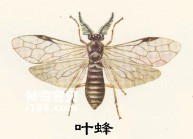
(1) Tenthredinidae
The rear edge of the pronotum is concave and the body is thick and short. There are wing moles on the forewings and many wing chambers. The tibia of the forefoot has 2 terminal distances. Ovipositor flat saw-shaped. Herbivorous, many species shuttle between flowers, some prey on flies or small beetles, and parthenogenesis is common. There are more than 4,000 known species in the family, accounting for 2/3 of the known species of the suborder Erythora. Common ones in my country include Dolerus tritici Chu, Hoplocampa pyricola Rohwer, etc.
II. Suborder Apocrita
The base of the abdomen is tightly tied into a thin waist shape, or extended into a handle shape, and the first abdominal segment merges forward into the chest, which is called the thoracoabdominal segment. Turn to 1-2 sections. The hind wings have 1-2 basal cells. The larvae are legless.
(I) Terebrantia
The abdominal plate of the distal segment is split longitudinally, and the ovipositor is often exposed, protruding from the end of the abdomen. Hind wings without basal leaves. The trochanter of the foot is mostly 2 sections.

(1) Ichneumonidae
Body length 3-40 mm, antennae with more than 16 segments, not knee-shaped. There are wing nevus on the forewing, the wing veins are well developed and there are 3 disc chambers. The larvae parasitize the larvae and pupae of holometabolous insects such as Lepidoptera, Coleoptera, Diptera, Hymenoptera, and Neuroptera. Nearly 15,000 species are known in the world and are widely distributed. About 1,000 species are known in my country, which are important natural enemy insects.
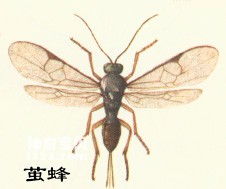
(2) Braconidae
Body length 2-12 mm. It is similar to the Brachiidae, but the difference is that the forewing has 2 disc chambers, and the dorsal plates of the 2nd and 3rd segments of the abdomen are healed. The larvae parasitize insects of the order Lepidoptera, Coleoptera, and Diptera, as well as insects of the order Hemiptera and Mecoptera. They usually parasitize larvae and pupae, but some also parasitize adults of Coleoptera and Hemiptera. Nearly 4,500 species are known in the world and are widely distributed. About 300 species are known in my country and they are important natural enemy insects.

(3) Chalcidoidea
Body length 0.17-16 mm, generally 1-5 mm. The antennae are knee-shaped, with more than 13 segments. The wing veins are extremely degraded, with only 1-2 wing veins on the front edge, and no obvious wing nevus and wing chambers. The pronotum does not extend the wing base. Turn to section 2. Except for a few that maintain or return to herbivory, the vast majority parasitize insect eggs, larvae, pupae, adults and spider eggs, spiderlings and adults, and are important natural enemy insect groups.
(4) Gall wasp family Cynipidae
Body length 1-6 mm, smooth or finely hairy, blue, brown or yellow, shiny. Antennae filamentous, 11-16 segments. The pronotum extends to the base of the wing, and the foot has 1 trochanter. Wingless nevus on forewing. Most of the larvae parasitize on Fagaceae plants and cause galls. Important pests include chestnut gall wasp Dryocosmus kuriphilus Yasumatsu and others.
(II) Pintail group Aculeata
The abdominal plate at the end of the abdomen does not split longitudinally, and the ovipositor is specialized as a chelicerae, which comes from the end of the abdomen and is generally retracted into the body without being exposed. Turn to 1 section. The hind wings often have rump lobes.
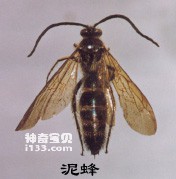
(1) Sphecidae
Generally black, with yellow, orange or red markings, smooth or hairy body. The abdomen is spindle-shaped with a distinct ventral stalk. The legs are long and slender, and the forefoot is suitable for digging. The midfoot tibia has 2 spurs. The hind wings have anal lobes, most of which have closed cells. They often prey on Lepidoptera larvae and Orthoptera insects as food storage for their offspring. Common ones include Sphex subtruncatus Dahlbom, etc.
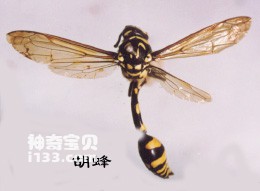
(2) Vespoidea
The commonly referred to wasps belong to this type of insect. They are large in size and bright in color, ranging from yellow, black, and brown with colorful spots. The antennae generally have 13 segments for males and 12 segments for females, with occasional exceptions. The pronotum extends posteriorly to the base of the wing. When at rest, the longitudinal folds of the wings cover the body. They are carnivorous and most have social behaviors. They are natural enemies of agricultural and forestry pests, as well as pests in sericulture and beekeeping. Adults, larvae and bee combs can be used as medicine, and bee venom is an expensive medicine. However, when humans and animals accidentally touch a beehive, swarms of bees chase and claw at them, often causing injuries, and in severe cases, death. They often build nests and move around in areas where people live. Includes 19 families, the most common ones being Vespidae and Waspidae.
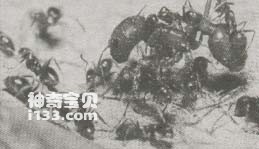
(3) Formicidae
Commonly known as ants. Small body, black, brown, yellow or red. Body smooth or hairy. The antennae are knee-shaped, with 4-13 segments, the stalk segment is very long, and the 2-3 segments at the end are enlarged. Section 1 or 1 and 2 of the abdomen are knot-shaped. Winged or wingless. The front feet are widely spaced and comb-shaped, which are used as angle cleaners (for cleaning the antennae). It is a polymorphic social insect with more than 14,000 known species. Common ones include house ants Monomorium pharaonis L. and others.
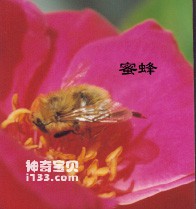
(4) Apoidea, superfamily of bees
From small to large, most of the bodies are covered with downy hair or hair bands composed of downy hairs, and a few are smooth or have a metallic luster. The hairy branching or pinnation of the mesonotum is the main characteristic of this superfamily. The antennae have 13 segments in males and 12 segments in females. Pronotum does not extend to wing base. Turn 1 section, and most species have pink-carrying hind legs.
There are three types of lifestyles: ① social, ② solitary, and ③ parasitic.
animal tags:
We created this article in conjunction with AI technology, then made sure it was fact-checked and edited by a Animals Top editor.